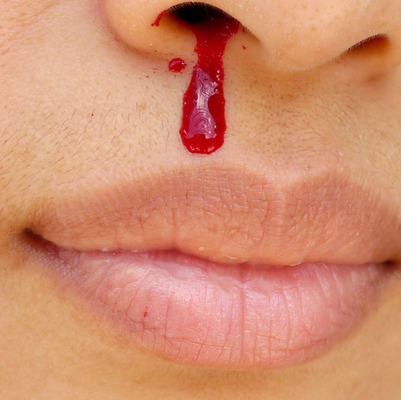Adenoids
What Are Adenoids?
Adenoids are small glands made of lymphoid tissue, quite similar to the tonsils. They are located in the nasopharynx (the space behind the nose and above the roof of the mouth). Unlike tonsils, adenoids cannot be seen by simply looking into the throat.
Adenoids play an important role in fighting infections during early childhood. However, when they become enlarged or infected, they can lead to breathing and sleep problems.
Symptoms of Enlarged or Infected Adenoids
-
Breathing mostly through the mouth
-
Noisy or difficult breathing
-
Snoring during sleep
-
Nasal speech (blocked or muffled voice)
Spaks Homeopathy Approach:
Homeopathy aims to:
Reduce adenoid enlargement naturally
Relieve snoring and breathing troubles
Strengthen immunity to prevent repeated infections
Avoid the need for surgical removal in many cases
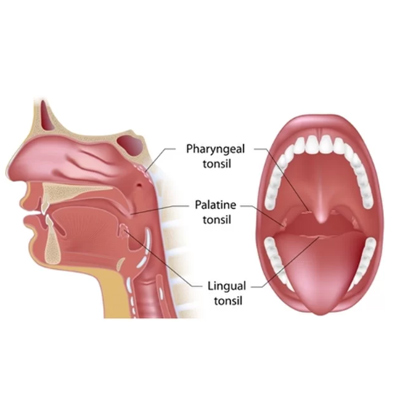
Allergy
Overview
An allergic reaction happens once the body reacts to a substance. This may cause a mild to severe problem. There are different kinds of allergies.
The most common allergies are to: Things in the air such as pollen, mold, pet dander or dust.
Things you touch like metal, latex or chemicals. Foods you eat or drink like eggs, peanuts, nuts, milk, soy, wheat or shellfish. Insect stings, like from yellow jackets, bees, wasps, hornets or ants.
Medicines AN allergic reaction can not be cured, however treatment will help you feel higher.The best plan is to avoid the substances that make your signs worse.
Other signs depend on the cause of the allergy and may include:
• Itchy, runny or stuffy nose
• Sinus pressure
• Sneezing
• Itchy, red, swollen, burning or watery eyes
• Itchy throat or cough
• Decreased taste or smell
• Headaches
• Nausea or vomiting
• Abdominal pain or cramping
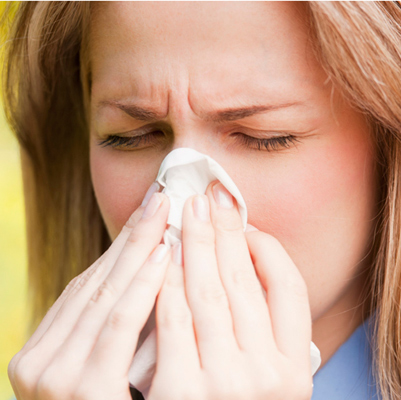
Anosmia
Anosmia – An Overview
Most of us take our sense of smell for granted. But imagine what life would be like without it. Anosmia is the complete loss of the sense of smell.
Without this ability:
-
Food tastes bland or different
-
You cannot enjoy natural fragrances, like flowers
-
You may be unable to detect dangerous situations such as a gas leak, smoke from a fire, or spoiled food
Symptoms of Anosmia
-
Complete or partial loss of smell
-
Familiar things start to lose their usual odor
-
Fever (above 100.4°F / 38°C)
-
Aching muscles, chills, and sweats
-
Headache
-
Dry, persistent cough
-
Fatigue and weakness
-
Nasal congestion or blocked nose
-
Sore throat
Spaks Homeopathy Approach
At Spaks Homeopathy, treatment for anosmia focuses on:
Restoring the natural function of nasal passages
Reducing inflammation, congestion, or infection
Supporting recovery after respiratory illnesses (like flu, cold, or COVID-19)
Improving overall immunity and vitality—without side effects
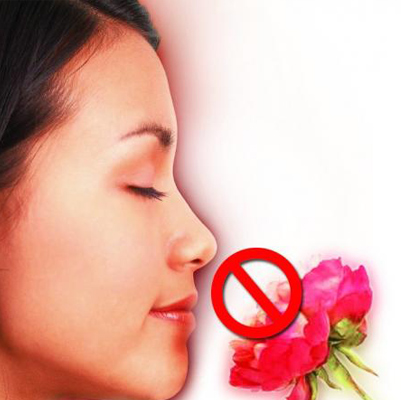
Common Cold
Overview
The common cold is a viral infection of the nose and throat (upper respiratory tract). Although generally harmless, it can be uncomfortable and disruptive. Many different viruses, most often rhinoviruses, can cause a cold.
Children under the age of six are most prone, but healthy adults may also experience two to three colds per year. Most people recover within 7–10 days without complications.
Symptoms
-
Runny or stuffy nose
-
Sore throat
-
Cough
-
Congestion
-
Mild body aches or headache
-
Sneezing
-
Low-grade fever
-
General tiredness or malaise
Effects
-
Short-term discomfort and reduced productivity
-
Disrupted sleep due to coughing or congestion
-
Spreading infection easily to family, friends, or co-workers
-
In children or those with weak immunity, colds can lead to complications like ear infections, sinusitis, bronchitis, or pneumonia
-
Temporary loss of appetite and energy
Treatment
Since the common cold is viral, antibiotics are not effective. Treatment focuses on relieving symptoms and supporting recovery:
-
Rest and hydration – plenty of fluids and adequate sleep
-
Saltwater gargle – to soothe sore throat
-
Steam inhalation or humidifier – to ease nasal congestion
-
Warm fluids (soup, tea, honey water) – to comfort throat and loosen mucus
-
Over-the-counter remedies – decongestants, lozenges, or pain relievers (if needed)
-
Avoiding smoking and alcohol, which can worsen symptoms
-
Good hygiene practices – frequent handwashing to prevent spreading the infection
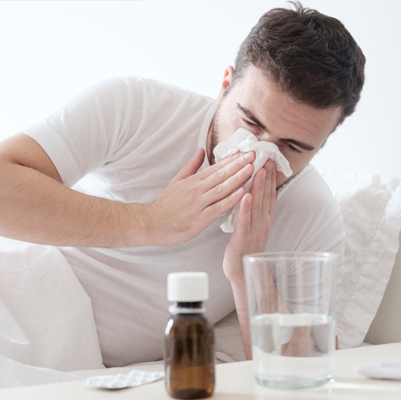
Nasal Congestion
Nasal Congestion (Stuffy Nose)
Overview
Nasal congestion, or a “stuffy nose,” occurs when the tissues and blood vessels inside the nose become swollen with excess fluid. This swelling blocks airflow, creating a feeling of obstruction.
It may or may not be accompanied by nasal discharge (runny nose). For most adults and older children, it is a temporary inconvenience. However, in infants, congestion can interfere with feeding, and in children it can disturb sleep, making it more serious.
Symptoms
-
Stuffy or blocked nose (main symptom)
-
Runny nose or postnasal drip
-
Bad breath
-
Cough (especially at night)
-
Ear pain or fullness
-
Fatigue and disturbed sleep
-
Fever (in case of infection)
-
Headache or facial pressure/pain
-
Itchy eyes, nose, mouth, or throat
-
Mild body aches
Effects (Complications if Severe or Untreated)
-
Difficulty sleeping or poor-quality sleep
-
Feeding problems in infants
-
Recurrent ear infections (otitis media)
-
Sinus infections (sinusitis)
-
Reduced concentration and fatigue during the day
Treatment
Home Remedies
-
Use a humidifier or inhale steam to keep nasal passages moist.
-
Drink plenty of fluids to thin mucus.
-
Apply a warm compress on the face to ease sinus pressure.
-
Saline nasal sprays or drops help wash out allergens and mucus.
-
Elevate the head while sleeping to ease breathing.
Medical Treatment
-
Decongestant sprays or tablets (short-term use only).
-
Antihistamines (if allergy-related).
-
Pain relievers for headache or facial pain.
-
Antibiotics if bacterial sinus infection is confirmed.
Homeopathic Support (Complementary Use)
-
Arsenicum Album – for burning nasal discharge with restlessness.
-
Nux Vomica – for stuffy nose at night, worse in the morning.
-
Pulsatilla – for thick yellow-green discharge, better in open air.
-
Kali Bichromicum – for thick, stringy mucus with sinus pain.
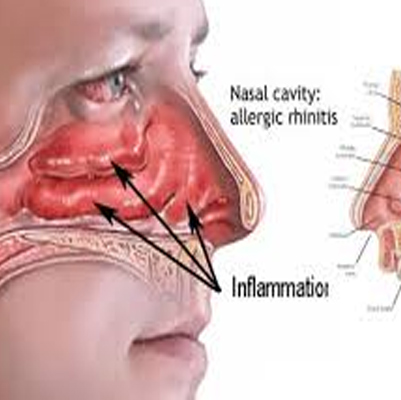
Nasal Fracture
Broken Nose (Nasal Fracture)
Overview
A broken nose, also known as a nasal fracture, is a crack or break in one of the nasal bones, usually over the bridge of the nose. It commonly occurs due to contact sports, falls, fights, or motor vehicle accidents that cause facial trauma.
A broken nose often results in pain, swelling, bruising around the nose and eyes, and sometimes difficulty in breathing. The nose may also appear crooked or misshapen.
In most cases, treatment involves realignment and supportive care. Surgery is only required if the fracture is severe or causes major functional/cosmetic problems.
Symptoms
-
Pain or tenderness, especially when touching the nose
-
Swelling of the nose and surrounding areas
-
Nosebleeds (bleeding from the nose)
-
Bruising around the nose or under the eyes (black eye)
-
Crooked or misshapen nose
-
Difficulty breathing through the nose
-
Discharge of mucus or blood
-
Blocked feeling in one or both nostrils
Effects (Complications if Untreated)
-
Persistent nasal deformity (crooked nose)
-
Chronic nasal obstruction or breathing difficulty
-
Frequent sinus infections due to blocked nasal passages
-
Septal hematoma (collection of blood inside nasal septum)
-
Sleep problems like snoring or sleep apnea
-
Rarely, vision disturbances (if injury is severe)
Treatment
Immediate Care
-
Apply cold compress/ice packs to reduce swelling.
-
Keep your head elevated, even while sleeping.
-
Control bleeding by leaning forward and pinching the nostrils gently.
Medical Treatment
-
Pain relievers (e.g., acetaminophen, ibuprofen).
-
Manual realignment by a doctor (within 14 days of injury).
-
Splinting the nose to stabilize the fracture.
-
Antibiotics if there is a risk of infection.
-
Surgery (septorhinoplasty) in severe cases with deformity or breathing problems.
Homeopathic Support (Complementary Use)
-
Arnica Montana – for pain, swelling, and bruising after trauma.
-
Symphytum Officinale – to support bone healing.
-
Belladonna – for throbbing pain with redness and heat.
-
Ruta Graveolens – for soreness and pain in cartilage and periosteum.
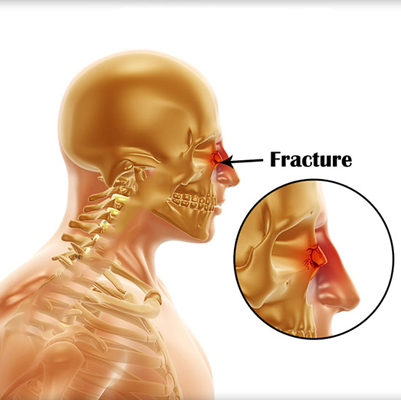
Nasal polyps
Nasal Polyps
Overview
Nasal polyps are soft, painless, noncancerous growths that develop on the lining of the nasal passages or sinuses. They often hang down like teardrops or grapes.
They usually form due to chronic inflammation, which may result from asthma, recurrent infections, allergies, drug sensitivity, or immune disorders.
Small polyps may not cause noticeable symptoms. However, larger or multiple polyps can block nasal passages, leading to breathing difficulties, loss of smell, and frequent sinus infections.
Nasal polyps are more common in adults, and while medications can often shrink or remove them, surgery may be needed in severe cases.
Symptoms
Since nasal polyps are soft and not sensitive, small ones may go unnoticed. Larger ones or multiple growths can cause:
-
Persistent nasal congestion or stuffiness
-
Runny nose
-
Postnasal drip
-
Decreased or lost sense of smell
-
Loss of taste
-
Snoring or sleep disturbance
-
Facial pain, pressure, or headache
-
Pain in the upper teeth
-
Frequent sinus infections
Effects (Complications if Untreated)
-
Chronic sinus infections (sinusitis)
-
Sleep apnea (breathing pauses during sleep)
-
Ongoing breathing difficulties
-
Worsening of asthma symptoms
-
Permanent loss of smell in severe cases
-
Facial structure changes (rare, if polyps are very large)
Treatment
Medical Treatment
-
Nasal corticosteroid sprays – first line treatment to shrink polyps and reduce inflammation.
-
Oral or injectable corticosteroids – for larger or resistant polyps.
-
Antihistamines – if allergies are a contributing factor.
-
Antibiotics – for associated infections.
-
Biologic medicines (Dupilumab, Mepolizumab, etc.) – in chronic, severe cases.
Surgical Treatment
-
Polypectomy – minimally invasive removal of small polyps.
-
Endoscopic sinus surgery – removes larger polyps and clears sinus passages, improving airflow.
Lifestyle & Home Care
-
Use a humidifier to keep air moist.
-
Rinse nasal passages with saline spray or neti pot.
-
Avoid triggers like allergens, smoke, and strong odors.
-
Manage asthma and allergies effectively.
Homeopathic Support (Complementary Use)
-
Sanguinaria Nitrica – for nasal blockages with headaches.
-
Teucrium Marum – for polyps with constant sneezing and irritation.
-
Kali Bichromicum – for thick nasal discharge and sinus infections.
-
Lemna Minor – often considered a key remedy for nasal polyps.
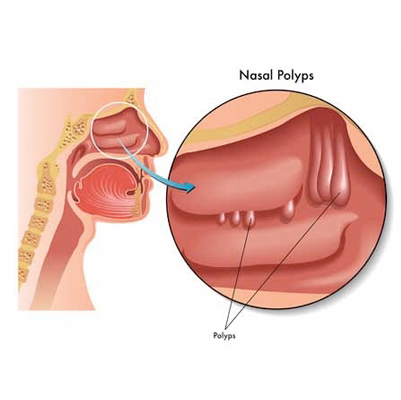
Nosebleed
Overview
Nosebleed, medically known as epistaxis, is a common condition because the nose sits prominently in the center of the face and contains a rich supply of blood vessels. Almost everyone experiences at least one nosebleed in their lifetime.
Spontaneous nosebleeds are especially common in children. They usually occur when the delicate inner lining of the nose (mucous membrane) becomes dry, crusty, or cracked, and is then irritated by nose-picking or rubbing. Even a minor injury to the face can cause significant bleeding due to the dense blood supply in the nasal passages.
Symptoms
-
Sudden or heavy bleeding from the nose
-
Palpitations (irregular heartbeat)
-
Swallowing blood, which may lead to nausea or vomiting
-
Shortness of breath
-
Weakness and paleness (due to blood loss)
Effects
-
Frequent nosebleeds may cause anemia (low hemoglobin levels).
-
Can lead to dizziness or fainting if bleeding is prolonged.
-
In severe cases, blood may enter the throat and lungs, causing breathing difficulties.
-
May increase anxiety or stress, especially in children and elderly patients.
Treatment
-
First Aid:
-
Sit upright and lean forward slightly (to avoid blood flowing into the throat).
-
Pinch the soft part of the nose (just below the nasal bridge) for about 10–15 minutes.
-
Apply a cold compress or ice pack to the bridge of the nose to constrict blood vessels.
-
-
Medical Care (if bleeding is heavy or recurrent):
-
Nasal packing (insertion of gauze or special material inside the nose).
-
Cauterization (sealing the bleeding vessel with heat or chemicals).
-
Medications to control blood pressure or dryness, if these are contributing factors.
-
-
Prevention:
-
Keep the nasal passages moist with saline sprays or petroleum jelly.
-
Avoid excessive nose-picking or forceful blowing.
-
Use a humidifier in dry climates.
-
Treat underlying conditions such as high blood pressure or allergies.
-
